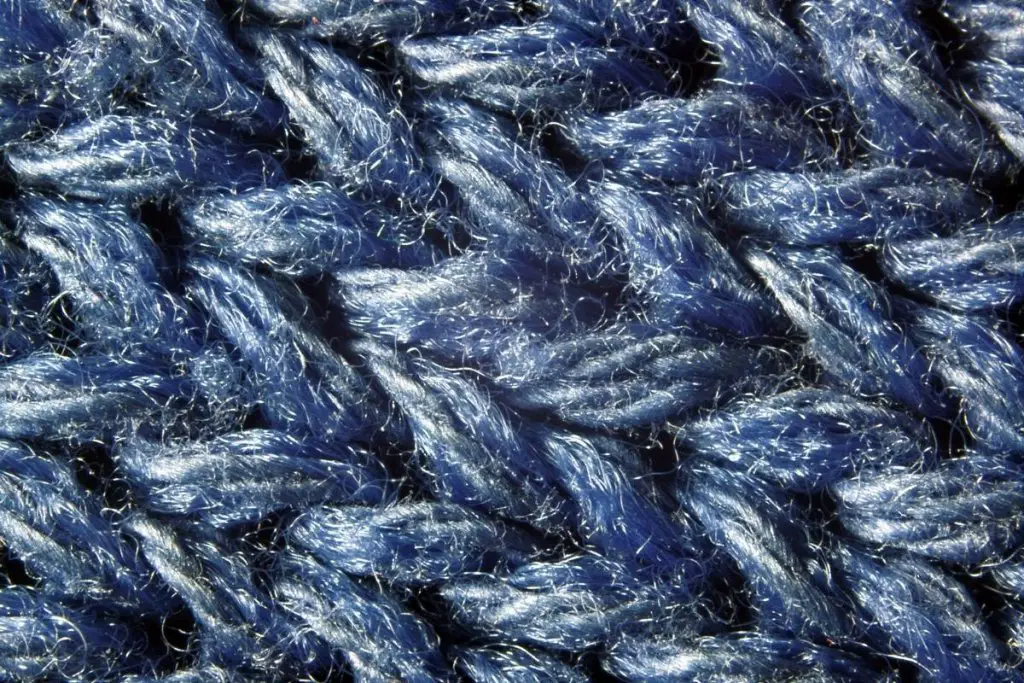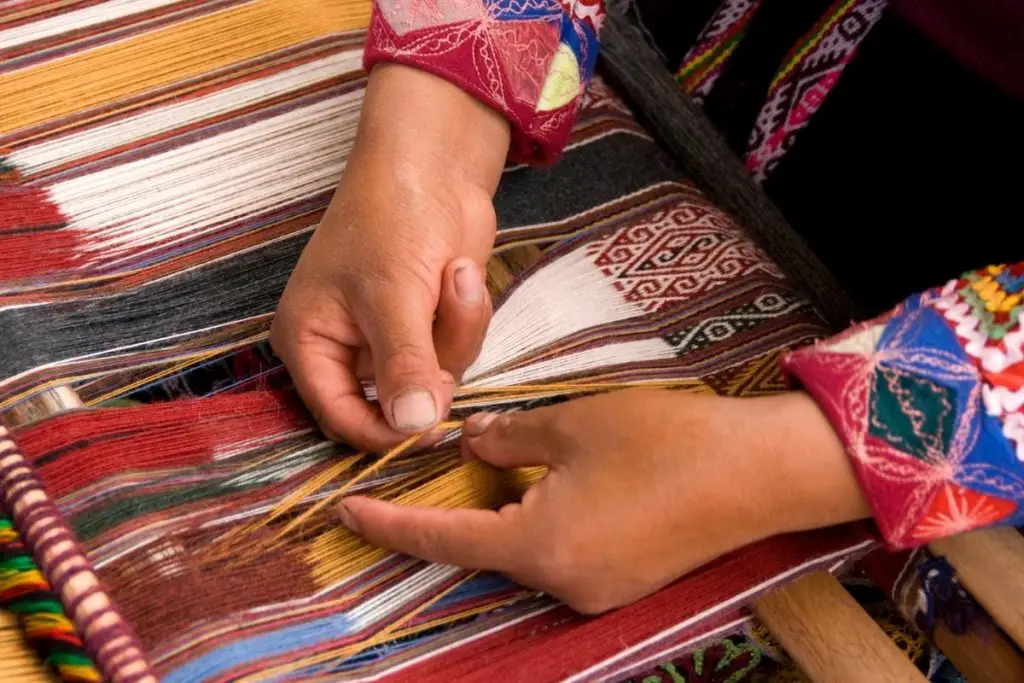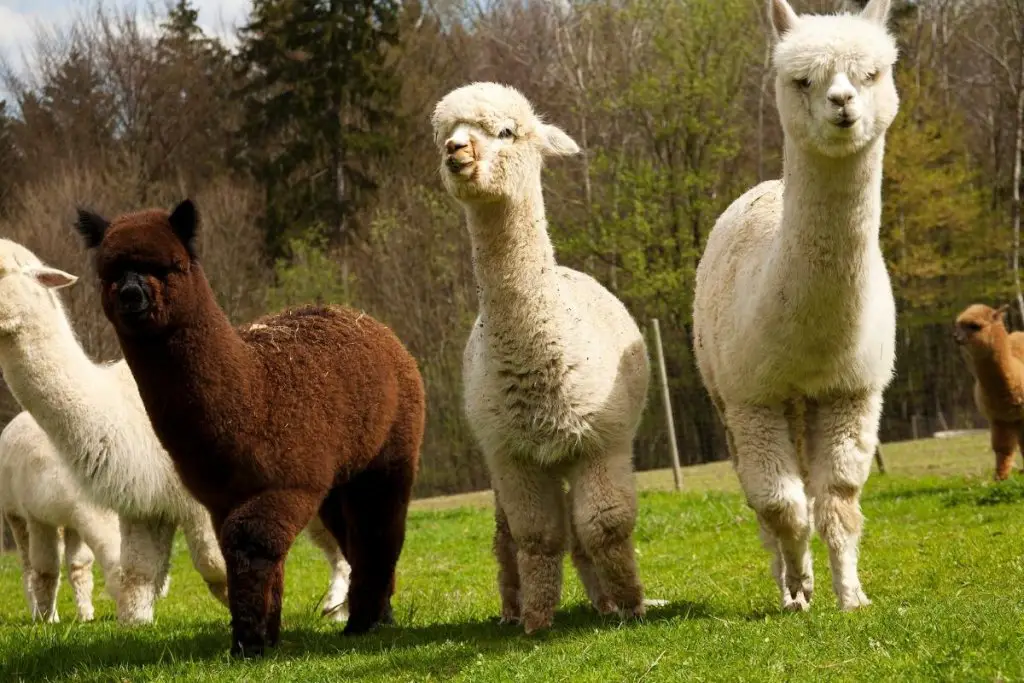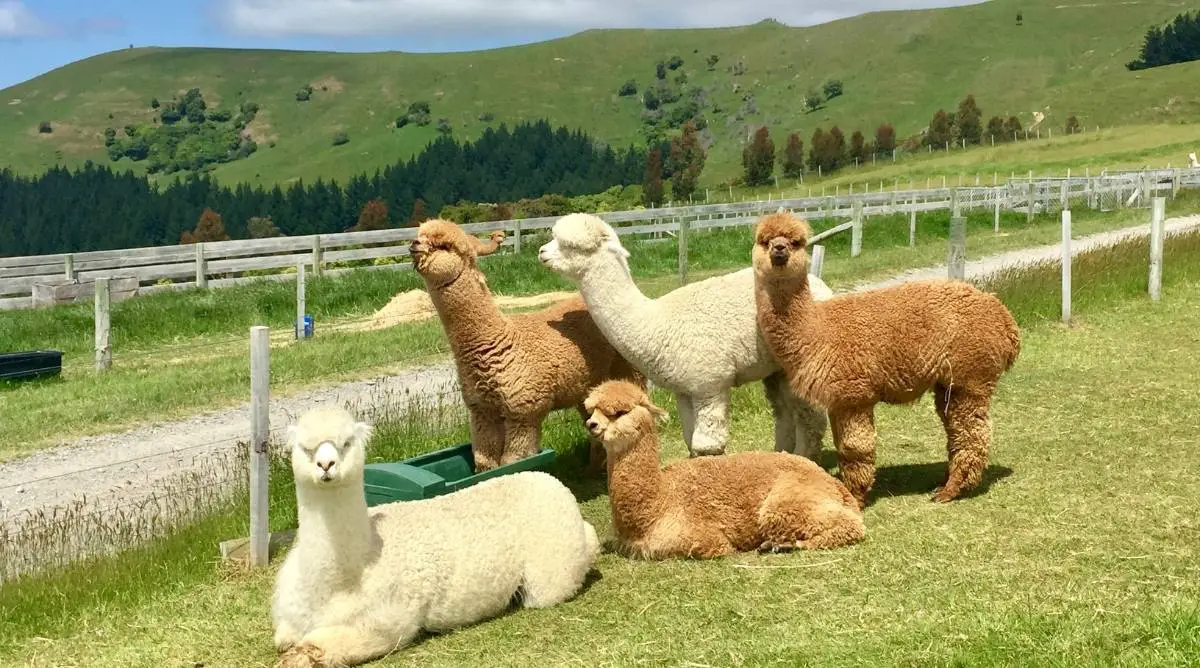Alpaca wool weighs less than sheep wool and is more expensive. It also has hollow fibers, resulting in a softer, less itchy material. Sheep wool is cheaper than alpaca wool and more elastic, making it easier to work with for most applications.
Table of Contents
Differences between alpaca wool vs sheep wool
| Attribute | Alpaca Wool | Sheep Wool |
| Location | Mostly South America | Globally |
| Population | 248,000 (United States) | 5.2 million (United States) |
| Avg Cost per Ounce | $2 | $0.11 |
| Texture | Soft, smooth, less itchy | Rough, thick, can be itchy |
| Fibers | Hollow | Traps air |
| Warmth | Requires less material than sheep wool for the same warmth | Warm, but requires relatively more material than alpaca wool |
| Ease to work with | 10% elasticity; can be harder to work with. Sometimes blended with sheep wool to make it easier to work with. | 80% elastic; easier to work with. |
| Moisture-wicking | Water-resistant and water-repellant (not waterproof) | Not water-resistant, water-repellant, or waterproof |
| Microbial properties | Naturally antimicrobial | Naturally antimicrobial |
| Natural colors | Around 22 | Around 6 |
Itchiness

Sheep wool from most breeds tends to be rough and thick. Alpaca wool is often likened to cashmere. It is soft, smooth, and glossy.
Clothes made of alpaca wool are often more comfortable, even without a barrier between the clothes and the skin. Sheep wool can be scratchy when worn in direct contact with the skin.
Price
Products made of alpaca wool are more expensive than wool products. Alpaca fleece is harder to obtain, process, and create.
It may cost sheep wool suppliers around $2 to $4 to shear one sheep, but shearing one alpaca can cost up to $32. Aside from the shearing costs, manufacturers also have to pay about $2 for an ounce of alpaca fleece, while sheep fleece only costs around $0.11 for an ounce.
The number of sheep in the United States is about 5.2 million, while alpacas only amount to about 248,000. Alpacas are native to places like the Andes of Peru, Chile, and Bolivia in South America, so suppliers generally get their fleece from those places.
Wool from Merino sheep can cost anywhere from $10 to $40 for a ball of yarn, and is more comparable to alpaca wool in terms of price and quality
Warmth
Alpaca has hollow fibers, while sheep fleece has a lot of air pockets. This extra space within alpaca fibers boosts the thermal capacity of alpaca wool. Textiles made from baby alpaca wool retain heat even better.
Sheep wool also traps air, helping sheep keep warm in colder climates. But it tends to create less warmth than alpaca wool.
Ease to work with

Sheep wool is about 80% elastic, while alpaca wool is 10% elastic. This makes sheep wool easier to work with. Alpaca fiber is often combined with sheep wool to give it more elasticity.
Both alpaca and sheep wool are washable. Textiles made of alpaca wool can be hand-washed or dry cleaned, laid flat to dry, and should be folded instead of hung. Textiles made of sheep’s wool can be hand-washed or machine-washed, turned inside out, laid flat to dry, and folded instead of hung.
Durability
Alpaca wool grows long before being sheared. This results in a tightly-spun yarn with high tensile strength, creating durable textiles.
Alpaca fleece tends to shed less compared with mohair, Merino wool, and other types of sheep wool.
Moisture wicking
Fleece from alpacas is water-resistant and water-repellant but not completely waterproof. Alpaca fleece has better moisture-wicking properties than sheep wool.
Microbial properties
Alpaca wool and sheep wool are both naturally antimicrobial. The fibers in sheep wool have a natural emollient called lanolin which inhibits the growth of mildew, mold, and bacteria. Alpaca wool is also resistant to dust mites.
Colors
There tends to be more variety in the natural shades of alpaca wool than there is with sheep wool. There are around 22 colors of alpaca wool, and around 6 natural colors of sheep’s wool.
Texture
Alpaca wool tends to have a softer, finer, less itchy texture than sheep wool.
The highest quality of alpaca wool reaches a width of just 16-18 microns. For comparison, a strand of human hair averages 70-100 microns. Merino wool, one of the finest sheep wools in existence, reaches around 24 microns.
Advantages of Alpaca Wool

- It can be just as warming as sheep wool with less material due to its hollow fibers.
- It is antibacterial, dust mite resistant, and moisture-wicking.
- There is a greater natural variety of colors.
- It is soft and hypoallergenic.
- It is highly durable.
Advantages of Sheep Wool
- Sheep wool is cheaper than alpaca wool and easier to access.
- Sheep wool is easier to work with than alpaca wool because of its elasticity.
- Textiles made of sheep wool can be machine-washed.
Why is sheep wool more widely used than alpaca wool?
There are many more sheep than alpacas around the world, creating a lower price point for sheep wool. Sheep are found in nearly every environment on the planet, while alpacas are more commonly found in South America.
Sheep wool is also more elastic than alpaca wool, making it more popular for some applications.

